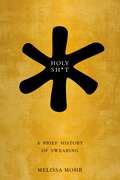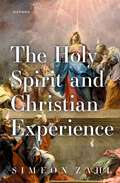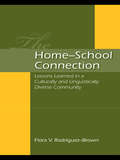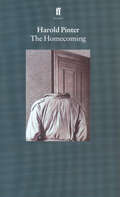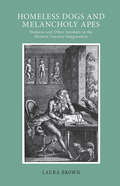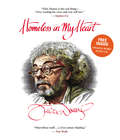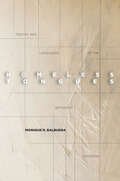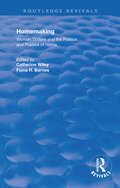- Table View
- List View
Holy Humanitarians: American Evangelicals and Global Aid
by Heather D. CurtisOn May 10, 1900, an enthusiastic Brooklyn crowd bid farewell to the Quito. The ship sailed for famine-stricken Bombay, carrying both tangible relief—thousands of tons of corn and seeds—and “a tender message of love and sympathy from God’s children on this side of the globe to those on the other.” The Quito may never have gotten under way without support from the era’s most influential religious newspaper, the Christian Herald, which urged its American readers to alleviate poverty and suffering abroad and at home. In Holy Humanitarians, Heather D. Curtis argues that evangelical media campaigns transformed how Americans responded to domestic crises and foreign disasters during a pivotal period for the nation. Through graphic reporting and the emerging medium of photography, evangelical publishers fostered a tremendously popular movement of faith-based aid that rivaled the achievements of competing agencies like the American Red Cross. By maintaining that the United States was divinely ordained to help the world’s oppressed and needy, the Christian Herald linked humanitarian assistance with American nationalism at a time when the country was stepping onto the global stage. Social reform, missionary activity, disaster relief, and economic and military expansion could all be understood as integral features of Christian charity. Drawing on rigorous archival research, Curtis lays bare the theological motivations, social forces, cultural assumptions, business calculations, and political dynamics that shaped America’s ambivalent embrace of evangelical philanthropy. In the process she uncovers the seeds of today’s heated debates over the politics of poverty relief and international aid.
Holy Sh*t: A Brief History of Swearing
by Melissa MohrAlmost everyone swears, or worries about not swearing, from the two year-old who has just discovered the power of potty mouth to the grandma who wonders why every other word she hears is obscene. Whether they express anger or exhilaration, are meant to insult or to commend, swear words perform a crucial role in language. But swearing is also a uniquely well-suited lens through which to look at history, offering a fascinating record of what people care about on the deepest levels of a culture--what's divine, what's terrifying, and what's taboo. Holy Sh*t tells the story of two kinds of swearing--obscenities and oaths--from ancient Rome and the Bible to today. With humor and insight, Melissa Mohr takes readers on a journey to discover how "swearing" has come to include both testifying with your hand on the Bible and calling someone a *#$&!* when they cut you off on the highway. She explores obscenities in ancient Rome--which were remarkably similar to our own--and unearths the history of religious oaths in the Middle Ages, when swearing (or not swearing) an oath was often a matter of life and death. Holy Sh*t also explains the advancement of civility and corresponding censorship of language in the 18th century, considers the rise of racial slurs after World War II, examines the physiological effects of swearing (increased heart rate and greater pain tolerance), and answers a question that preoccupies the FCC, the US Senate, and anyone who has recently overheard little kids at a playground: are we swearing more now than people did in the past? A gem of lexicography and cultural history, Holy Sh*t is a serious exploration of obscenity--and it also just might expand your repertoire of words to choose from the next time you shut your finger in the car door.
Holy Sh*t: A Brief History of Swearing
by Melissa MohrAlmost everyone swears, or worries about not swearing, from the two year-old who has just discovered the power of potty mouth to the grandma who wonders why every other word she hears is obscene. Whether they express anger or exhilaration, are meant to insult or to commend, swear words perform a crucial role in language. But swearing is also a uniquely well-suited lens through which to look at history, offering a fascinating record of what people care about on the deepest levels of a culture--what's divine, what's terrifying, and what's taboo. Holy Sh*t tells the story of two kinds of swearing--obscenities and oaths--from ancient Rome and the Bible to today. With humor and insight, Melissa Mohr takes readers on a journey to discover how "swearing" has come to include both testifying with your hand on the Bible and calling someone a *#$&!* when they cut you off on the highway. She explores obscenities in ancient Rome--which were remarkably similar to our own--and unearths the history of religious oaths in the Middle Ages, when swearing (or not swearing) an oath was often a matter of life and death. Holy Sh*t also explains the advancement of civility and corresponding censorship of language in the 18th century, considers the rise of racial slurs after World War II, examines the physiological effects of swearing (increased heart rate and greater pain tolerance), and answers a question that preoccupies the FCC, the US Senate, and anyone who has recently overheard little kids at a playground: are we swearing more now than people did in the past? A gem of lexicography and cultural history, Holy Sh*t is a serious exploration of obscenity--and it also just might expand your repertoire of words to choose from the next time you shut your finger in the car door.
The Holy Spirit and Christian Experience
by Simeon ZahlIn The Holy Spirit and Christian Experience, Simeon Zahl presents a fresh vision for Christian theology that foregrounds the relationship between theological ideas and the experiences of Christians. He argues that theology is always operating in a vibrant landscape of feeling and desiring, and shows that contemporary theology has often operated in problematic isolation from these experiential dynamics. He then argues that a theologically serious doctrine of the Holy Spirit not only authorizes but requires attention to Christian experience. Against this background, Zahl outlines a new methodological approach to Christian theology that attends to the emotional and experiential power of theological ideas. This methodology draws on recent interdisciplinary work on affect and emotion, which has shown that affects are powerful motivating realities that saturate all dimensions of human thinking and acting. In the process, Zahl also explains why contemporary theology has often been ambivalent about subjective experience, and demonstrates that current discourse about God's activity in the world is often artificially abstracted from experience and embodiment. At the heart of the book, Zahl proposes a new account of the theology of grace from this experiential and pneumatological perspective. Focusing on the work of the Holy Spirit in salvation and sanctification, he retrieves insights from Augustine, Luther, and Philip Melanchthon to present an affective and Augustinian vision of salvation as a pedagogy of desire. In articulating this vision, Zahl engages critically with recent emphasis on participation and theosis in Christian soteriology, and charts a new path forward for Protestant theology in a landscape hitherto dominated by the theological visions of Barth and Aquinas.
Home and Homeland in Asian Diaspora: Transnational Reflections in Art, Literature, and Film
by Kyunghee Pyun Jean AmatoWhile many of us may strive to locate a sense of identity and belonging expressed via a home or ancestral homeland; today, however, this connection is no longer, if it ever was, a straightforward identification. This collection aims at mapping narratives or artwork of home/homeland that present shared, private, multifaceted, and often contested experiences of place, especially in the context of today’s migrations and upheavals, along with alarming degrees of increased nativism, racism, and anti-Asian violence. This volume includes papers by artists, filmmakers, and comparative scholars from diverse disciplines of literature, cinema, art history, cultural studies, and gender studies. Our goal is to help literary and art historian scholars in Asian diaspora studies, better decolonize and open up traditional research methodologies, curricula, and pedagogies.
Home and Nation in Anglophone Autobiographies of Africa (African Histories and Modernities)
by Lena EnglundThis book looks at contemporary autobiographical works by writers with African backgrounds in relation to the idea of ‘place’. It examines eight authors’ works – Helen Cooper’s The House at Sugar Beach, Sisonke Msimang’s Always Another Country, Leila Ahmed’s A Border Passage, Noo Saro-Wiwa’s Looking for Transwonderland, Douglas Rogers’s The Last Resort, Elamin Abdelmahmoud’s Son of Elsewhere, Clemantine Wamariya and Elizabeth Weil’s The Girl Who Smiled Beads and Aminatta Forna’s autobiographical writing – to argue that place is particularly central to personal narrative in texts whose authors have migrated multiple times. Spanning Liberia, Nigeria, Sierra Leone, Egypt, Rwanda, Zambia, and Zimbabwe, this book interrogates the label ‘African’ writing which has been criticized for ignoring local contexts. It demonstrates how in their works these writers seek to reconnect with a bygone ‘Africa’, often after complex experiences of political upheavals and personal loss. The chapters also provide in-depth analyses of key concepts related to place and autobiography: place and privilege, place and trauma, and the relationship between place and nation.
Home as Found: Authority and Genealogy in Nineteenth-Century American Literature
by Eric J. SundquistEric Sundquist takes four representative writers—James Fenimore Cooper, Henry David Thoreau, Nathaniel Hawthorne, and Herman Melville—and considers the way in which each grapples with the crucial issues of genealogy and authority in his works. From all four a common pattern emerges: the desire to revolt against the past is countered by the need to invoke or even repeat it. Sundquist's approach to the texts is psychoanalytic, but he does not attempt a clinical dissection of each writer; rather, he determines how personal crisis became material for engaging with larger questions of social and literary crisis.
Home as Found: Authority and Genealogy in Nineteenth-Century American Literature
by Eric J. SundquistEric Sundquist takes four representative writers—James Fenimore Cooper, Henry David Thoreau, Nathaniel Hawthorne, and Herman Melville—and considers the way in which each grapples with the crucial issues of genealogy and authority in his works. From all four a common pattern emerges: the desire to revolt against the past is countered by the need to invoke or even repeat it. Sundquist's approach to the texts is psychoanalytic, but he does not attempt a clinical dissection of each writer; rather, he determines how personal crisis became material for engaging with larger questions of social and literary crisis.
Home Away from Home: Immigrant Narratives, Domesticity, and Coloniality in Contemporary Spanish Culture (North Carolina Studies in the Romance Languages and Literatures #315)
by N. Michelle MurrayHome Away from Home: Immigrant Narratives, Domesticity, and Coloniality in Contemporary Spanish Culture examines ideological, emotional, economic, and cultural phenomena brought about by migration through readings of works of literature and film featuring domestic workers. In the past thirty years, Spain has experienced a massive increase in immigration. Since the 1990s, immigrants have been increasingly female, as bilateral trade agreements, migration quotas, and immigration policies between Spain and its former colonies (including the Dominican Republic, Ecuador, Equatorial Guinea, and the Philippines) have created jobs for foreign women in the domestic service sector. These migrations reveal that colonial histories continue to be structuring elements of Spanish national culture, even in a democratic era in which its former colonies are now independent. Migration has also transformed the demographic composition of Spain and has created complex new social relations around the axes of gender, race, and nationality. Representations of migrant domestic workers provide critical responses to immigration and its feminization, alongside profound engagements with how the Spanish nation has changed since the end of the Franco era in 1975. Throughout Home Away from Home, readings of works of literature and film show that texts concerning the transnational nature of domestic work uniquely provide a nuanced account of the cultural shifts occurring in late twentieth- through twenty-first-century Spain.
Home/Fronts: Contemporary War in British Literature, Drama, and Film (Edition Kulturwissenschaft #226)
by Janina WierzochIn recent years, the US-led invasions of Afghanistan and Iraq have had an impact on the UK rivalled only by Brexit and the global financial crisis. For people at home, the wars were ever-present in the media yet remained distant and difficult to apprehend. Janina Wierzoch offers an analytical survey of British contemporary war narratives in novels, drama, film, and television that seek to make sense of the experience. The study shows how the narratives, instead of reflecting on the UK`s role as invader, portray war as invading the British home. Home loses its post-Cold War sense of »permanent peace« and is recast as a home/front where war once again becomes part of what it means to be »us«.
Home in America: On Loss and Retrieval
by Thomas DummAmericans encounter their homes in ways comforting and haunting: as an imagined refuge or a place of mastery and domination, a destination or a place to escape. Drawing on literature, personal experience, and the histories of slavery, incarceration, and homesteading, Thomas Dumm offers a meditation on the richness and poverty of the idea of home.
Home in British Working-Class Fiction
by Nicola WilsonHome in British Working-Class Fiction offers a fresh take on British working-class writing that turns away from a masculinist, work-based understanding of class in favour of home, gender, domestic labour and the family kitchen. As Nicola Wilson shows, the history of the British working classes has often been written from the outside, with observers looking into the world of the inhabitants. Here Wilson engages with the long cultural history of this gaze and asks how ’home’ is represented in the writing of authors who come from a working-class background. Her book explores the depiction of home as a key emotional and material site in working-class writing from the Edwardian period through to the early 1990s. Wilson presents new readings of classic texts, including The Ragged Trousered Philanthropists, Love on the Dole and Saturday Night and Sunday Morning, analyzing them alongside works by authors including James Hanley, Walter Brierley, Lewis Grassic Gibbon, Buchi Emecheta, Pat Barker, James Kelman and the rediscovered ’ex-mill girl novelist’ Ethel Carnie Holdsworth. Wilson's broad understanding of working-class writing allows her to incorporate figures typically ignored in this context, as she demonstrates the importance of home's role in the making and expression of class feeling and identity.
Home in British Working-Class Fiction
by Nicola WilsonHome in British Working-Class Fiction offers a fresh take on British working-class writing that turns away from a masculinist, work-based understanding of class in favour of home, gender, domestic labour and the family kitchen. As Nicola Wilson shows, the history of the British working classes has often been written from the outside, with observers looking into the world of the inhabitants. Here Wilson engages with the long cultural history of this gaze and asks how ’home’ is represented in the writing of authors who come from a working-class background. Her book explores the depiction of home as a key emotional and material site in working-class writing from the Edwardian period through to the early 1990s. Wilson presents new readings of classic texts, including The Ragged Trousered Philanthropists, Love on the Dole and Saturday Night and Sunday Morning, analyzing them alongside works by authors including James Hanley, Walter Brierley, Lewis Grassic Gibbon, Buchi Emecheta, Pat Barker, James Kelman and the rediscovered ’ex-mill girl novelist’ Ethel Carnie Holdsworth. Wilson's broad understanding of working-class writing allows her to incorporate figures typically ignored in this context, as she demonstrates the importance of home's role in the making and expression of class feeling and identity.
Home Matters: Longing and Belonging, Nostalgia and Mourning in Women’s Fiction
by R. RubensteinDespite its typically regressive associations with homesickness, the longing associated with nostalgia may also function progressively as a vehicle for imaginatively 'fixing' the past in two senses: securing and mending or repairing. Considering fiction by two British and six American women writers of different generations and ethnicities, this study explores tensions between home and exile, insider and outsider, longing and belonging, loss and recovery. Rubenstein argues that nostalgia functions narratively as a strategy for interrogating not only notions of home, homesickness, and homeland but also cultural historical dislocation, aging, and moral responsibility. These narratives re-frame a significant locus of concern in contemporary (female) experience: personal and/or cultural dis-placement and longing for home are ultimately transmuted - imaginatively, at least - by a restorative vision that enables healing and emotional repair.
Home, Memory and Belonging in Italian Postcolonial Literature
by Chiara GiulianiThis book examines the meaning of home through the investigation of a series of public and private spaces recurrent in Italian postcolonial literature. The chapters, by respectively considering Termini train station in Rome, phone centres, the condominium, and the private spaces of the bathroom and the bedroom, investigate how migrant characters inhabit those places and turn them into familiar spaces of belonging. Home, Memory and Belonging in Italian Postcolonial Literature suggests “home spaces” as a possible lens to examine these specific places and a series of practices enacted by their inhabitants in order to feel at home. Drawing on a wide array of sources, this book focuses on the role played by memory in creating transnational connections between present and past locations and on how these connections shape migrants’ sense of self and migrants’ identity.
The Home-School Connection: Lessons Learned in a Culturally and Linguistically Diverse Community
by Flora V. Rodriguez-Brown"In this unique contribution to the literature on parental involvement in culturally and linguistically diverse communities, Flora Rodríguez-Brown offers a critique of family literacy programs that lack a clear design for literacy activities relevant to community goals, offering an alternative model that is grounded within an abiding respect for the parents’ role as the child’s first, and ultimately, most important teacher." Robert D. Milk, University of Texas, San Antonio The Project FLAME program used as context for this book is a comprehensive family literacy model, supported by a strong sociocultural framework based on current research on cultural ways of learning and theories of multiliteracies and discourse. The model highlights the relevance of parents’ knowledge, cultural ways, and discourses in sharing literacy knowledge with their children. A pressing need exists for models and programs that effectively serve the educational needs of the steadily increasing numbers of culturally and linguistically diverse students in U.S. public schools today. Addressing issues related to development, implementation, and effectiveness of a program model that fulfills this need, this book is an essential resource for educators, community workers, and researchers interested in the relevance of the home-school connection in relation to children’s school success.
The Home-School Connection: Lessons Learned in a Culturally and Linguistically Diverse Community
by Flora V. Rodriguez-Brown"In this unique contribution to the literature on parental involvement in culturally and linguistically diverse communities, Flora Rodríguez-Brown offers a critique of family literacy programs that lack a clear design for literacy activities relevant to community goals, offering an alternative model that is grounded within an abiding respect for the parents’ role as the child’s first, and ultimately, most important teacher." Robert D. Milk, University of Texas, San Antonio The Project FLAME program used as context for this book is a comprehensive family literacy model, supported by a strong sociocultural framework based on current research on cultural ways of learning and theories of multiliteracies and discourse. The model highlights the relevance of parents’ knowledge, cultural ways, and discourses in sharing literacy knowledge with their children. A pressing need exists for models and programs that effectively serve the educational needs of the steadily increasing numbers of culturally and linguistically diverse students in U.S. public schools today. Addressing issues related to development, implementation, and effectiveness of a program model that fulfills this need, this book is an essential resource for educators, community workers, and researchers interested in the relevance of the home-school connection in relation to children’s school success.
Home-School Connections in a Multicultural Society: Learning From and With Culturally and Linguistically Diverse Families (Language, Culture, and Teaching Series)
by Maria Luiza Dantas Patrick C. ManyakEducators everywhere confront critical issues related to families, schooling, and teaching in diverse settings. Directly addressing this reality, Home-School Connections in a Multicultural Society shows pre-service and practicing teachers how to recognize and build on the rich resources for enhancing school learning that exist within culturally and linguistically diverse families. Combining engaging cases and relevant key concepts with thought-provoking pedagogical features, this valuable resource for educators at all levels: Provides detailed portraits of diverse families that highlight their unique cultural practices related to schooling and the challenges that their children face in school settings Introduces key sociocultural and ethnographic concepts, in ways that are both accessible and challenging, and applies these concepts as lenses through which to examine the portraits Shows how teachers and researchers have worked with diverse families to build positive relationships and develop learning activities that incorporate children’s unique experiences and resources Disrupting deficit assumptions about the experiences and knowledge that culturally and linguistically diverse children acquire in their homes and communities, this book engages readers in grappling deeply and personally with the chapters’ meanings and implications, and in envisioning their own practical ways to learn from and with families and children.
Home-School Connections in a Multicultural Society: Learning From and With Culturally and Linguistically Diverse Families (Language, Culture, and Teaching Series)
by Maria Luiza Dantas Patrick C. ManyakEducators everywhere confront critical issues related to families, schooling, and teaching in diverse settings. Directly addressing this reality, Home-School Connections in a Multicultural Society shows pre-service and practicing teachers how to recognize and build on the rich resources for enhancing school learning that exist within culturally and linguistically diverse families. Combining engaging cases and relevant key concepts with thought-provoking pedagogical features, this valuable resource for educators at all levels: Provides detailed portraits of diverse families that highlight their unique cultural practices related to schooling and the challenges that their children face in school settings Introduces key sociocultural and ethnographic concepts, in ways that are both accessible and challenging, and applies these concepts as lenses through which to examine the portraits Shows how teachers and researchers have worked with diverse families to build positive relationships and develop learning activities that incorporate children’s unique experiences and resources Disrupting deficit assumptions about the experiences and knowledge that culturally and linguistically diverse children acquire in their homes and communities, this book engages readers in grappling deeply and personally with the chapters’ meanings and implications, and in envisioning their own practical ways to learn from and with families and children.
Home Truths: Fictions of the South Asian Diaspora in Britain
by Susheila NastaThe figure of the disaporic or migrant writer has recently come to be seen as the 'Everyman' of the late modern period, a symbol of the global and the local, a cultural traveller who can traverse the national, political and ethnic boundaries of the new millennium. Home Truths: Fictions of the South Asian Diaspora in Britain seeks not only to place the individual works of now world famous writers such as VS Naipaul, Salman Rushdie, Sam Selvon or Hanif Kureishi within a diverse tradition of im/migrant writing that has evolved in Britain since the Second World War, but also locates their work, as well as many lesser known writers such as Attia Hosain, GV Desani, Aubrey Menen, Ravinder Randhawa and Romesh Gunesekera within a historical, cultural and aesthetic framework which has its roots prior to postwar migrations and derives from long established indigenous traditions as well as colonial and post-colonial visions of 'home' and 'abroad'. Close critical readings combine with a historical and theoretical overview in this first book to chart the crucial role played by writers of South Asian origin in the belated acceptance of a literary poetics of black and Asian writing in Britain today.
The Homecoming: The Homecoming; Old Times; No Man's Land (Modern Plays Ser.)
by Harold Pinter'An exultant night - a man in total command of his talent.' Observer'The most intense expression of compressed violence to be found anywhere in Pinter's plays.' The TimesWhen Teddy, a professor in an American university, brings his wife Ruth to visit his old home in London, he finds his family still living in the house. In the conflict that follows, it is Ruth who becomes the focus of the family's struggle for supremacy.
Homeless Dogs and Melancholy Apes: Humans and Other Animals in the Modern Literary Imagination
by Laura BrownIn eighteenth-century England, the encounter between humans and other animals took a singular turn with the discovery of the great apes and the rise of bourgeois pet keeping. These historical changes created a new cultural and intellectual context for the understanding and representation of animal-kind, and the nonhuman animal has thus played a significant role in imaginative literature from that period to the present day. In Homeless Dogs and Melancholy Apes, Laura Brown shows how the literary works of the eighteenth century use animal-kind to bring abstract philosophical, ontological, and metaphysical questions into the realm of everyday experience, affording a uniquely flexible perspective on difference, hierarchy, intimacy, diversity, and transcendence.Writers of this first age of the rise of the animal in the modern literary imagination used their nonhuman characters—from the lapdogs of Alexander Pope and his contemporaries to the ill-mannered monkey of Frances Burney's Evelina or the ape-like Yahoos of Jonathan Swift—to explore questions of human identity and self-definition, human love and the experience of intimacy, and human diversity and the boundaries of convention. Later literary works continued to use imaginary animals to question human conventions of form and thought. Brown pursues this engagement with animal-kind into the nineteenth century—through works by Mary Shelley, Charles Dickens, and Elizabeth Barrett Browning—and into the twentieth, with a concluding account of Paul Auster's dog-novel, Timbuktu. Auster's work suggests that—today as in the eighteenth century—imagining other animals opens up a potential for dissonance that creates distinctive opportunities for human creativity.
Homeless in My Heart
by Felix DennisFollowing in the footsteps of A Glass Half Full, Lone Wolf and When Jack Sued Jill, Homeless In My Heart - Felix Dennis's long-awaited new collection of verse - is 'the story of a fool whose life was saved by poetry'.Felix Dennis's life has been a long series of unlikely events: incarceration by the British government in 1971 following the longest conspiracy trial in British history; recording a chart single with John Lennon; co-authoring Muhammad Ali's first biography; becoming one of the richest individuals in Britain; launching one of the most successful media brands in the world; falling into crack cocaine addiction; beginning the task of planting a huge native broad-leaf forest in the Heart of England; salvaging the wreckage of a life dedicated to hedonism; and, lastly, and most surprisingly of all, discovering that he could write the kind of poetry that people wanted to read and to hear.Now, with the publication of Homeless In My Heart, Felix Dennis's extraordinary talents have come to fruition - from ironic tales of darkness and savagery to hymns of praise for the glories of nature. Homeless In My Heart fulfils the promise predicted by the author and critic Tom Wolfe, who has called Dennis 'a 21st-century Kipling [whose poetry] rollicks and rolls with rhyme, meter and melody'.
Homeless Tongues: Poetry and Languages of the Sephardic Diaspora
by Monique BalbuenaThis book examines a group of multicultural Jewish poets to address the issue of multilingualism within a context of minor languages and literatures, nationalism, and diaspora. It introduces three writers working in minor or threatened languages who challenge the usual consensus of Jewish literature: Algerian Sadia Lévy, Israeli Margalit Matitiahu, and Argentine Juan Gelman. Each of them—Lévy in French and Hebrew, Matitiahu in Hebrew and Ladino, and Gelman in Spanish and Ladino—expresses a hybrid or composite Sephardic identity through a strategic choice of competing languages and intertexts. Monique R. Balbuena's close literary readings of their works, which are mostly unknown in the United States, are strongly grounded in their social and historical context. Her focus on contemporary rather than classic Ladino poetry and her argument for the inclusion of Sephardic production in the canon of Jewish literature make Homeless Tongues a timely and unusual intervention.
Homemaking: Women Writers and the Politics and Poetics of Home
by Catherine Wiley Fiona R. BarnesFirst published in 1996. The present volume, Homemaking: Women Writers and the Politics and Poetics of Home, enters the critical discourse on gender by way of two of its most pressing issues: the politics of women’s locations at the end of the twentieth century, and the division of experience into public and private. That the emergence of systematic feminist thought in the west coincided with the invention of "private life" should not surprise us. Feminist thinkers from Mary Wollstonecroft on were quick to realize that the designation of the public and the private, male and female, was key to the subordination of women.

